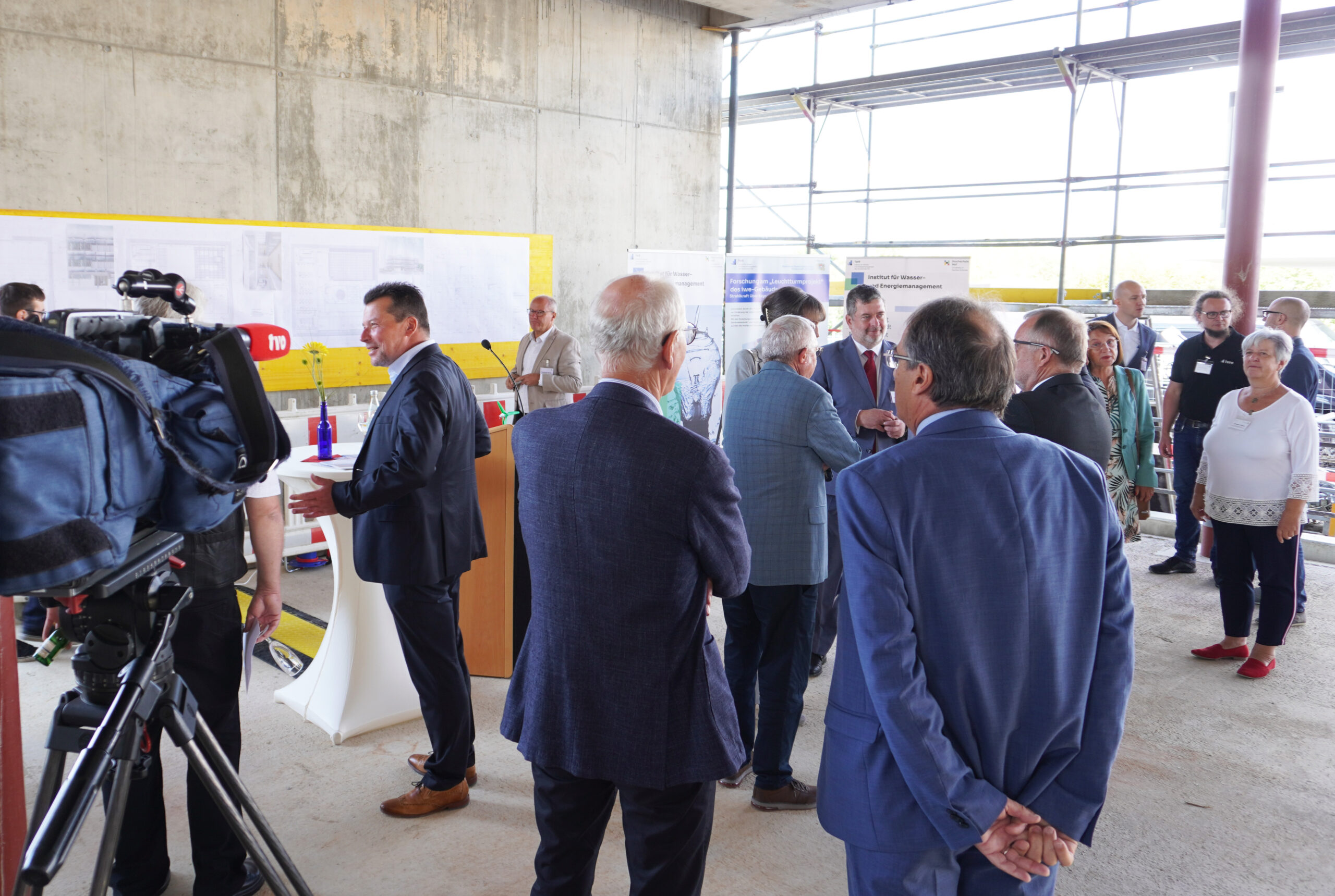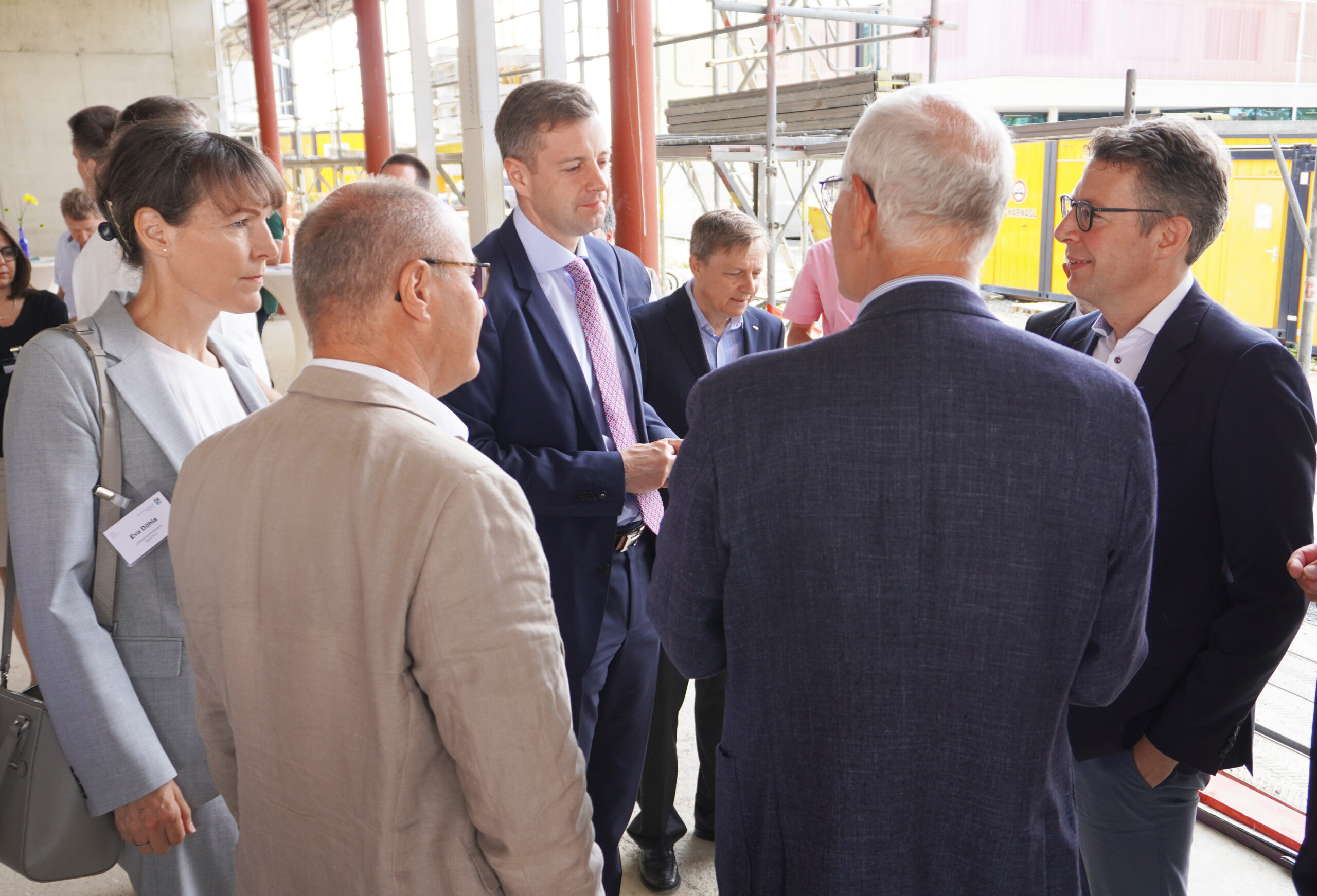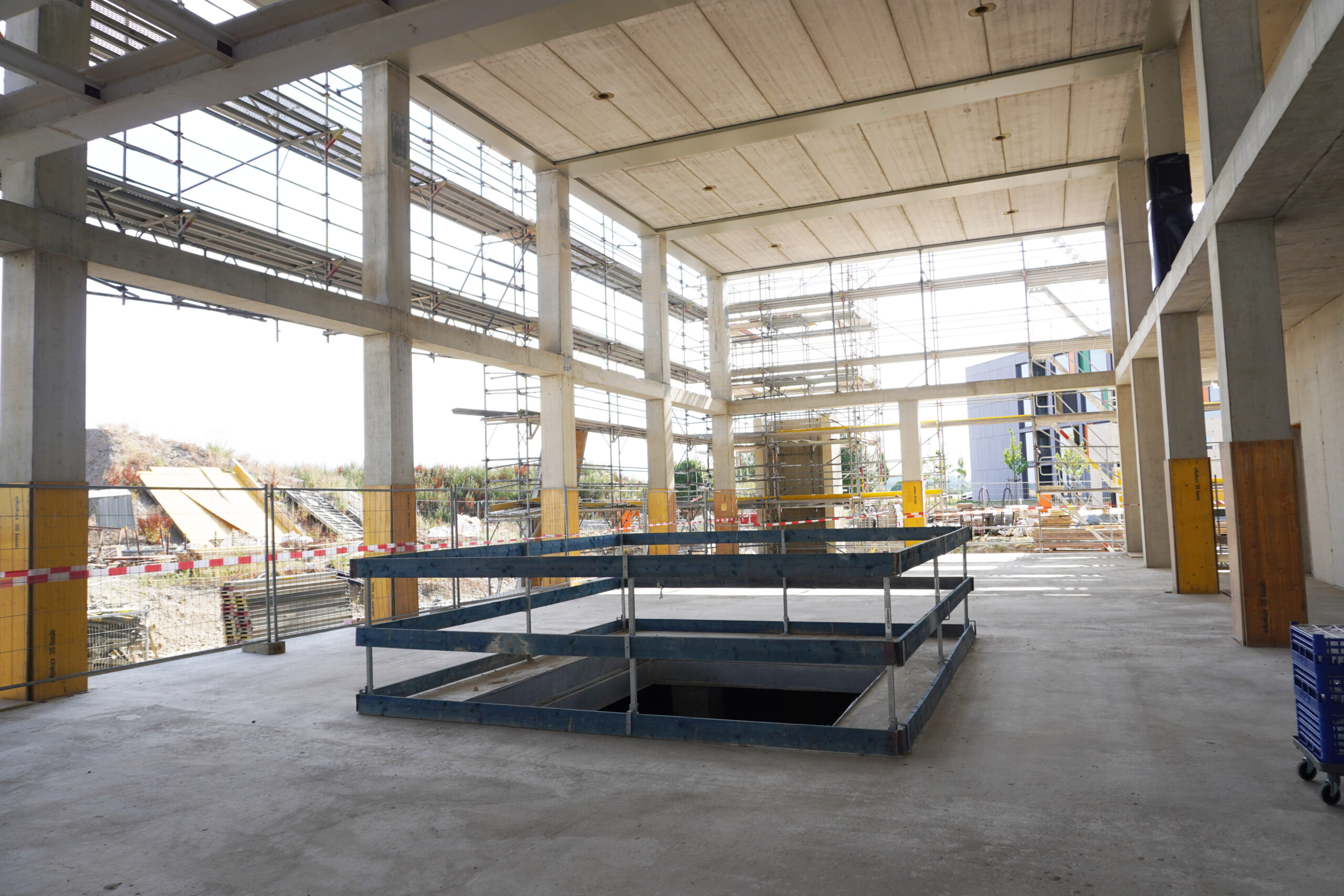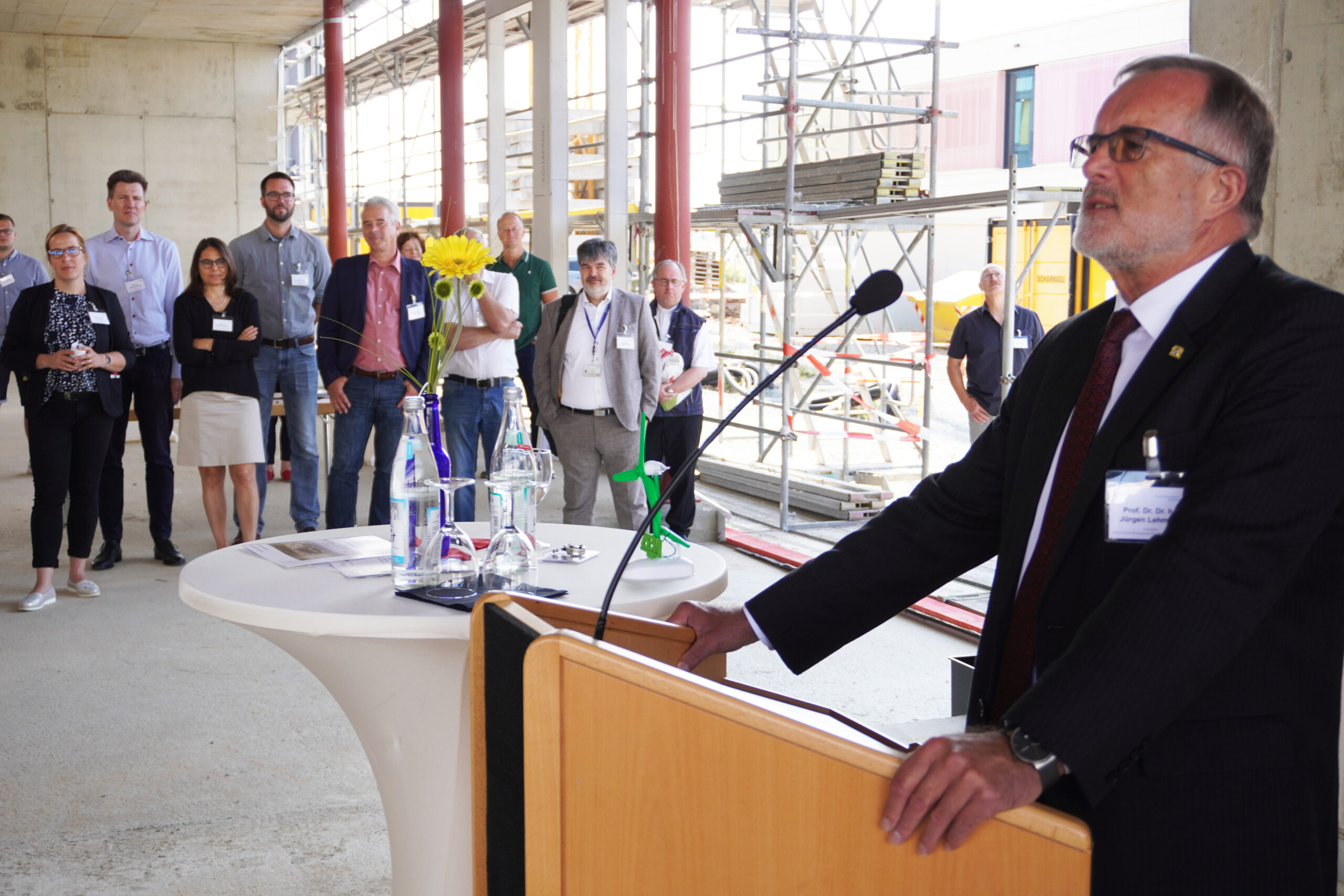In the presence of Bavaria’s Minister of State for Science and the Arts, Markus Blume, as well as many guests of honor from politics and science, another topping-out ceremony has now been celebrated on the campus of Hof University of Applied Sciences: With the new Center for Water and Energy Management, one of the most modern and flexible research facilities in Germany is being built here. The special feature: The building itself will become part of the research taking place in it.

Image: Hof University of Applied Sciences;
The figures are impressive: for an approved total construction sum of 22.6 million EUR, three lecture rooms, four project rooms, six offices for teaching staff, six laboratories, a technical center and three additional rooms for technical test benches are being created. The four emerging and fully barrier-free floors offer a total of 2500 m² of usable building space, to which ancillary use, traffic and technical areas are added. With a total height of 14 meters, the new building also blends in well with the existing university ensemble and the direct neighborhood of the Institute for Information Systems (iisys), the Einstein1 digital start-up center and the neighboring dormitory

An architectural competition completed back in October 2017 had rejected the original idea – to erect a glass building in the shape of a pyramid – and produced the cube that is now being created as the most suitable building form. The design by the Stuttgart-based architectural firm “VON M” has now been implemented. The shell construction under the leadership of the Bayreuth State Building Authority has been underway since July 2020:
This house is an excellent example of how wood is a building material with a long tradition and at the same time highly modern. It combines outstanding technical properties with a wide range of design options on the outer shell.”
Christof Präg, Senior Building Director and Head of Structural Engineering at the Bayreuth State Building Authority
And he continues: “The design of the façade is thus significantly influenced by the actual purpose of the building and carries the innovative character of the Center for Water and Energy Management to the outside. Research thus also presents itself on the facade!”
Space for 40 employees
In addition to high-tech laboratories for analytics and experimental setups, many practical pilot plants will be installed in it: “It took a long time, but now we are very pleased: In the future, research will be conducted here in the fields of refrigeration and heating technology, hydrogen applications, energetic biomass utilization, aquaponics, and water pollution control, as well as in the large field of water purification and much more,” says university president Prof. Dr. Dr. h.c. Jürgen Lehmann is enthusiastic about the many new possibilities. He continues
The ZWE will strengthen our competencies as a university and develop a supraregional appeal that will also benefit the entire region.”
Prof. Dr. Dr. h.c. Jürgen Lehmann
A total of up to 40 employees are to be accommodated in the premises.
Bavaria’s Science Minister Markus Blume comments thus
“Secure water, generate energy! For this we need clever ideas! Hof University of Applied Sciences is a competence center for the number one elixir of life and a think tank for energy – a source of ideas for sustainability and smart use of resources. With the new building of the Center for Energy and Water Management, we are investing 23 million euros in innovative strength and quality of life!”
Markus Blume, Minister of State for Science and the Arts
Building system controllable by researchers
Most of the equipment under construction is coupled to the building system with a 140 m³ heat storage tank that stores the experimental waste heat and the energy from the huge solar system directly in for heating the research and education facility as self-sufficiently as possible. The system can be controlled and programmed by the researchers themselves. For this purpose, a digital twin is currently being created as part of a doctorate, which will later intelligently calculate the operation in real time and enable maximum independence from fossil fuels based on weather forecasts and workflows as a beacon for the energy transition. In parallel, theoretical focal points are being worked on with a focus on sustainability and digitalization as well as modern computer simulation techniques in the water and energy sectors.









































